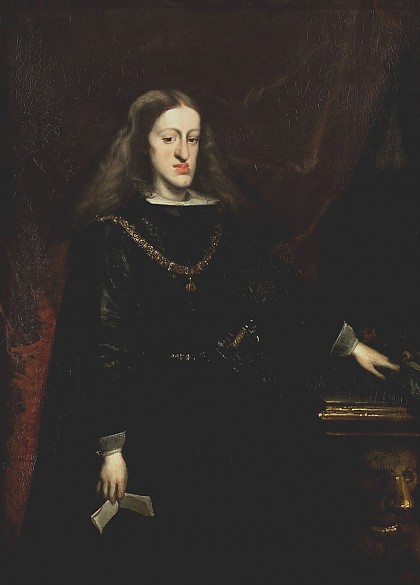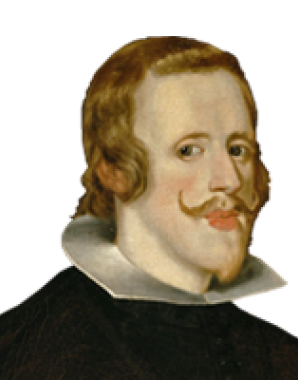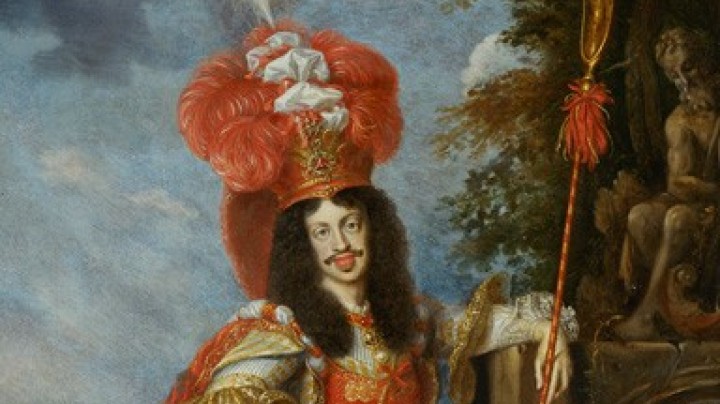Charles II: the last Spanish Habsburg
Charles II was the last Spanish ruler from the House of Habsburg. He is regarded as a grotesque reflection of Spain’s decline and a prototypical product of dynastic inbreeding.
The precarious situation of the Spanish Habsburgs, who were on the verge of extinction due to the lack of male heirs, manifested itself in rumours that the son marked so disastrously by the consequences of massive inbreeding was in fact a daughter who had been presented to the world as a boy out of panic that the dynasty was at an end.
The prince was a sorry spectacle, and his feeble health caused the family to fear for his life. Charles was afflicted with an almost bizarre ugliness; in him the classic Habsburg physiognomy – a prognathous jaw and elongated skull – was exaggerated to an almost cartoonish degree.
In the superstitious beliefs of the time, his pitiable condition and physical deformity were interpreted by some as evidence of bewitchment. The abortive attempts made to cure him by his physicians were accompanied by occult practices and exorcisms performed by priests.
In view of his feebleness (he suffered from a congenital heart defect) the prince was treated with extreme care as a child. He did not learn to read and write until a comparatively late age and was excluded from any kind of higher learning, with the result that as an adult he was kept away from the affairs of government. His behaviour was marked by imbecility and infantilism; for example, he loved counting things, an activity from which he derived great pleasure and reassurance.
Charles’s actual condition is difficult to judge from a present-day perspective. He would have needed careful, conscientious guidance, something which the people around him failed to supply, since various groupings at court had a great interest in a weak king. All his life Charles was under the changing influence of rival factions, who were, however, united in their efforts to instrumentalize the king for their own purposes.
And Charles was indeed easy to influence: he always followed the suggestions of those around him, upon whom he was completely dependent. At first his mother and her advisor, the Austrian Jesuit and confessor Johann Eberhard Nithard, and later on the First Minister Fernando Valenzuela, had the greatest influence on the mentally fragile monarch. Later Charles’s half-brother, Don Juan José, the product of an extra-marital liaison between his father and the actress Maria Calderón, became an important figure for him. However, Juan José also misused the king as an instrument for his ambitions.
According to the last will of his father, Philip IV, Charles was to be declared to have attained his majority on turning fourteen and to assume the regency. Charles’s mother, the dowager queen Maria Anna, wanted to prevent this, arguing that her son was not yet mentally or physically mature enough for this great responsibility. Influenced by the opposition, however, Charles refused to put his signature to the agreement postponing the declaration of his majority for two years. It was only after forceful persuasion by his mother that he was induced to sign it.
After eventually attaining his majority in 1675, he came under the influence of his half-brother Juan José, who following his return to court from exile had deprived the dowager queen’s party of its power and assumed the regency by force of arms.
Don Juan José administered the affairs of government in Charles’s name until his death in 1679. He encouraged the development of his feeble brother, and there seemed to be some improvement. As part of his policy of rapprochement with France he negotiated a marriage for Charles with the French princess Marie Louise of Orléans.
Following the sudden death of Don Juan José, Charles again came under the influence of his mother. Charles’s second wife, Maria Anna of Palatinate-Neuburg, also influenced the king in her favour, and he was degraded to being a mere pawn in the power struggle between his mother and his wife.













